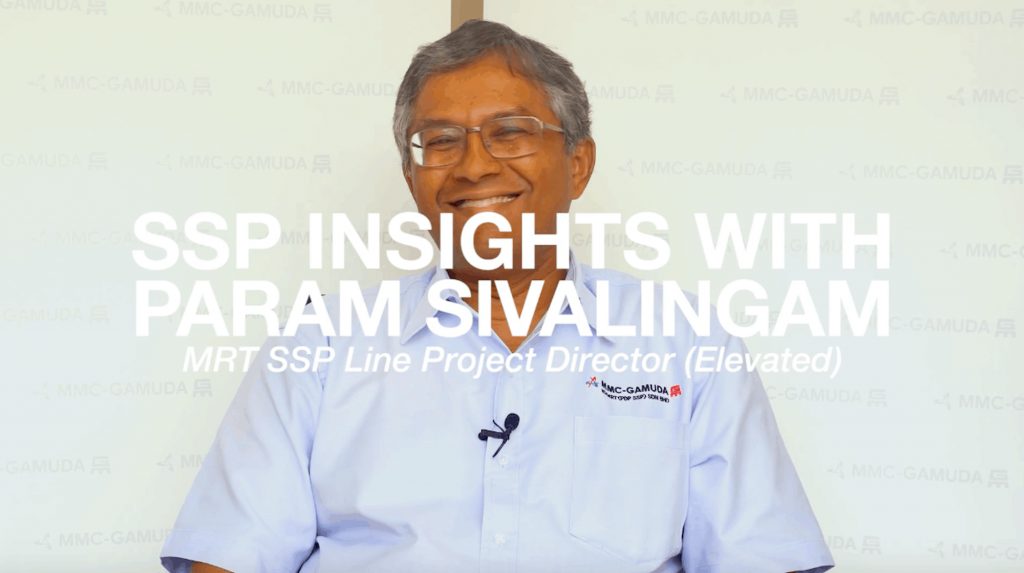SSP Insights with Param Sivalingam
Hi, I’m Param Sivalingam, Project Director for the MRT SSP Line. Here is my latest post on the Importance of Meeting Deadlines.
Every week I do a site walk through our work packages to see how things are at site.
For a project of this scale, the number of assets that are deployed at each work package is considerable. For the elevated portion alone, it’s around RM1 billion.
So productivity is essential. If we can’t optimise our productivity from these assets, both equipment and human resources, then we can’t achieve our completion date on time.
In order for productivity to be maintained, we must make sure that all the hurdles, all the technical decisions and all important parts of the design are done seamlessly with our contractors.
This is where our Key Access Dates (KADs) are crucial.
I’m sure you are all familiar with the concept of checkpoints and deadlines when completing assignments or homework. For me and this project, my checkpoints are called KADs and we use them to make sure all moving parts of the construction process are on track.
In total, there are 469 KADs on the MRT SSP Line, and to miss one would mean a delay in the project delivery because our subsequent contractors cannot work on their section as planned.
For example, at our Kuchai Lama Station site, we are working very closely with our contractor to make sure the station design and station area is ready to be handed over to our contractors to build the station.
This is a very consultative process. We talk to our contractors, we understand their needs, we address their needs and then we find a solution.
If you look at the Kuchai Lama site now, you can see a vast number of materials and equipment being mobilised. With the station being quite high at 25 metres, there needs to be a large focus on safety and ensuring the site is frequently audited by our team to make sure our assets are safe.
With so much to consider then, making sure our KADs are realistic is all the more vital. A realistic KAD means an achievable deadline. This sets up our people working in the project for success, motivating them to achieve their respective KADs.
This requires a lot of know how from the planning department to determine what are the key dates that are realistic based on the type of equipment, sequencing and utilities on the ground, as well as SHE practices and traffic management.
Once we assess that the date is realistic, we can then start the monitoring process to ensure all the resources are in place to help us reach this date.
This includes asking the contractors about the labour numbers, the Launching Gantries, the cranes, the training of the workers and the geotechnical risks. So, when I look at all these factors that can affect our KADs, I must be satisfied that we are still on schedule.
Of course, with a project like this, 20 to 30 per cent of the project parts will definitely encounter issues — issues with money, with labour and morale.
What we do to combat this is come to the site and see if our contractors are able to anticipate what kind of impact these issues will have ahead of time.
Then if necessary, we carry out an interception where we talk to them, find out what it is they need and analyse whether the problem is something deeper.
If that fails, we’re then required to step in and do it ourselves as a last line of defence.
But ultimately, our aim is to get on the ground, understand the reality of the project better and try and communicate to the contractors what we think are the issues at hand.
And I’m happy to say that until now, we are frequently meeting our KADs and progressing nicely towards our completion date in 2020.
Stay tuned for more SSP Insights with Param Sivalingam in the coming months.

